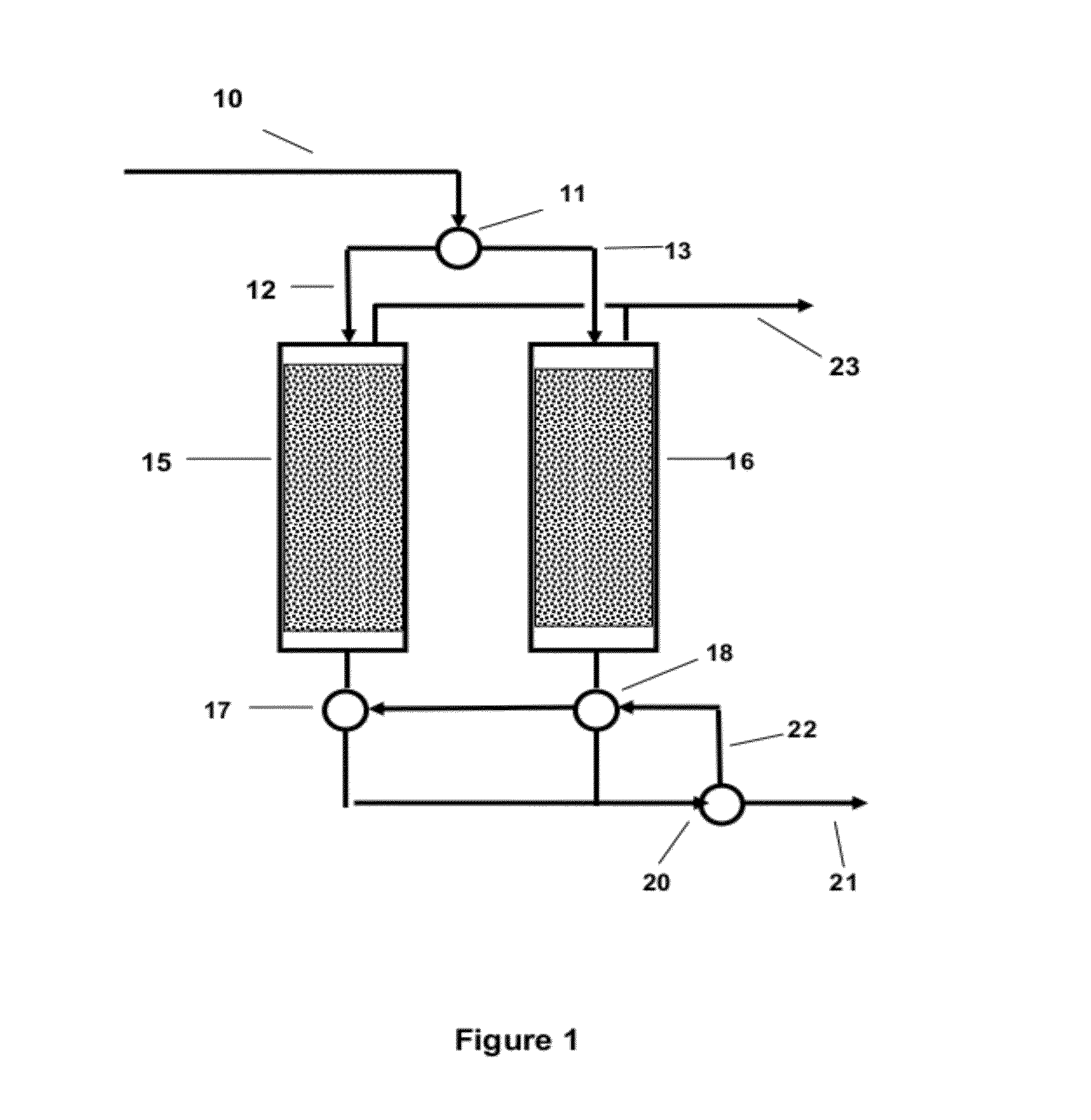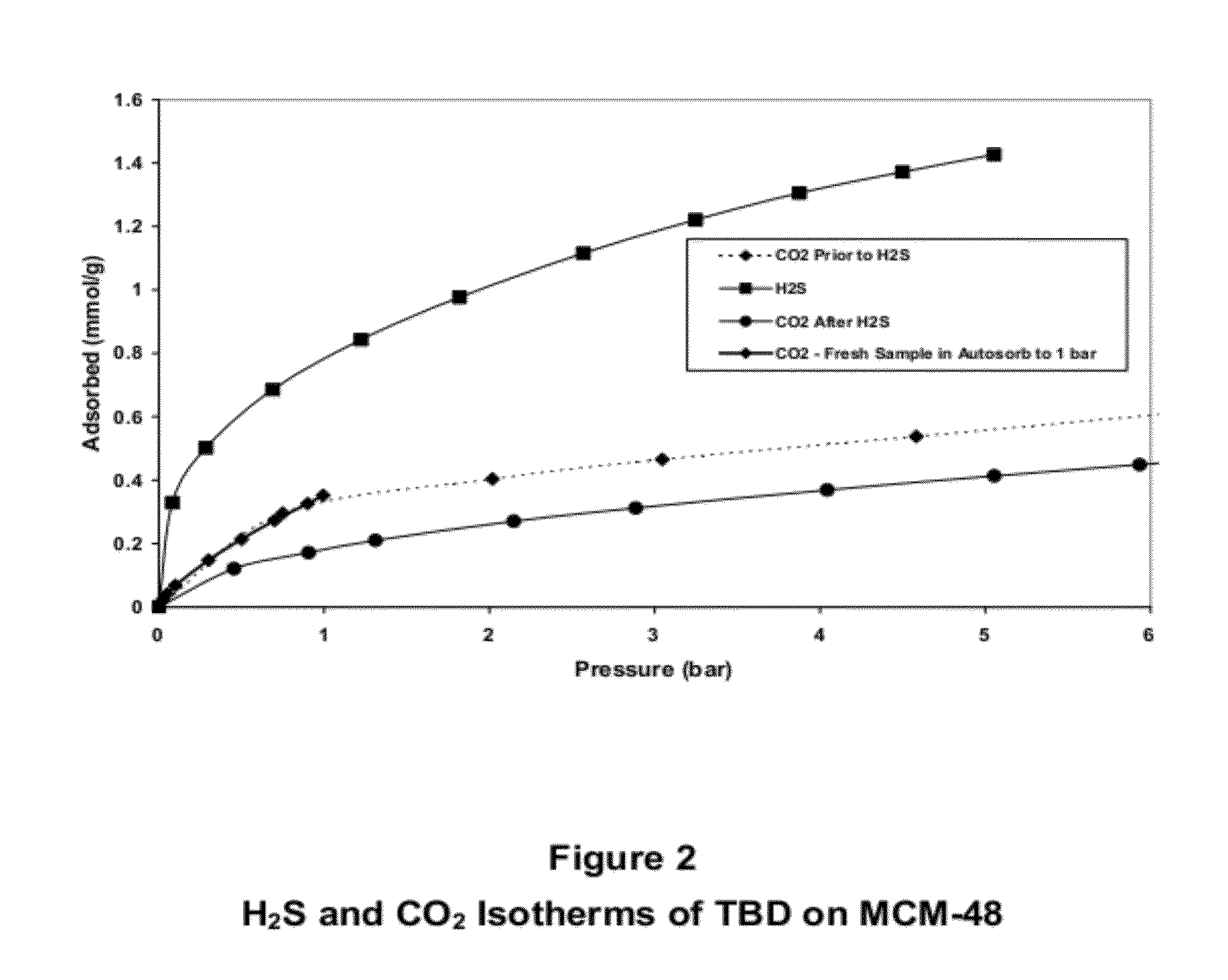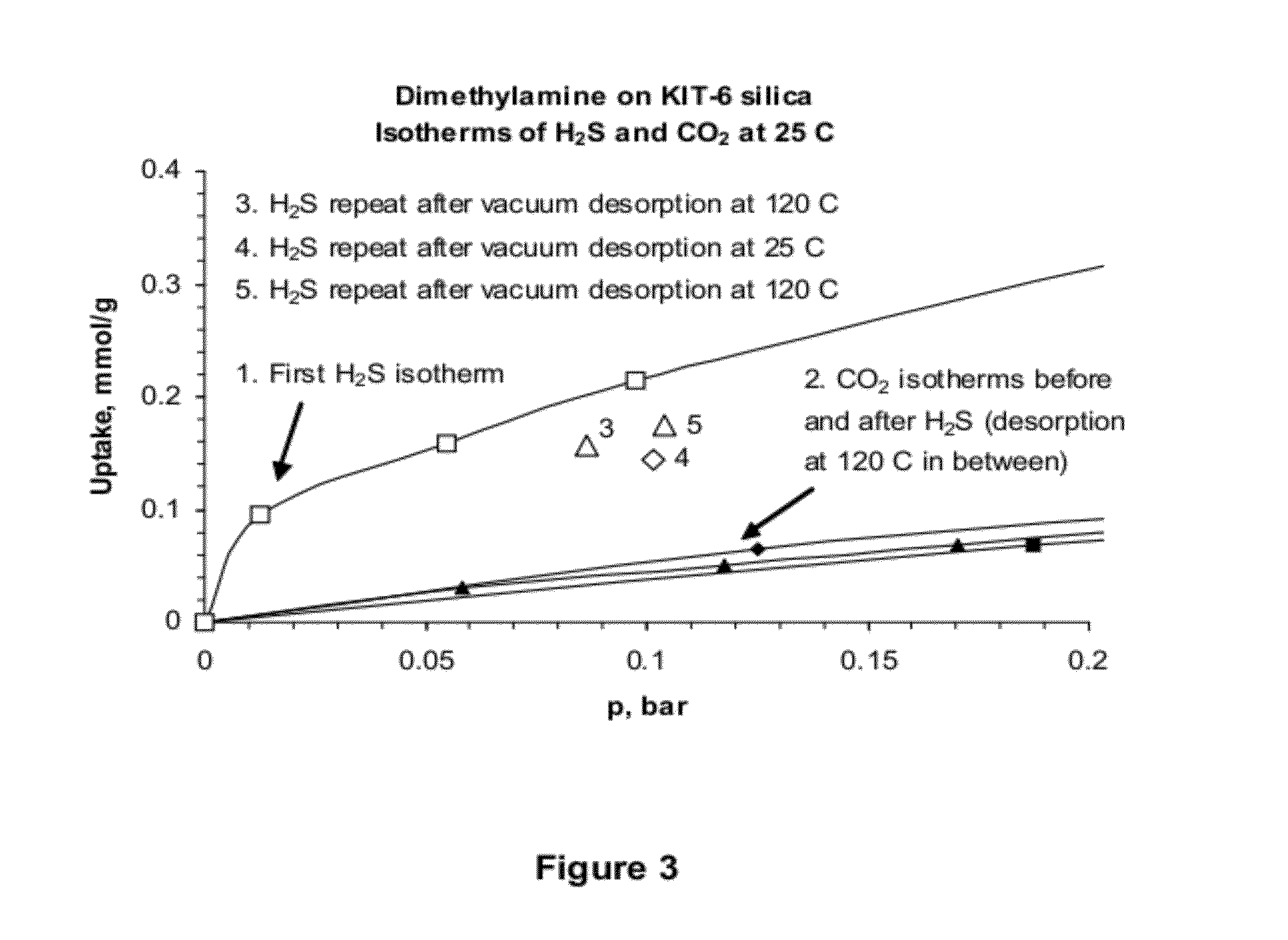Selective Sulfur Removal Process
a selective sulfur and process technology, applied in the direction of separation processes, sulfur preparation/purification, hydrogen sulfides, etc., can solve the problems of increased processing costs and the state of the art for large scale rapid cycle tsa units considerably less advanced
- Summary
- Abstract
- Description
- Claims
- Application Information
AI Technical Summary
Problems solved by technology
Method used
Image
Examples
example 1
Synthesis of Amine-Grafted Mesoporous Silicas
[0082]Mesoporous silica supports were prepared according to methods known in the literature or were purchased from commercial sources. Aminosilanes were either purchased from commercial sources or, in the case of the TBD and THP silanes (below), synthesized by the reaction of the cyclic amine with 1-trimethoxysilyl-3-iodopropane.
[0083]Amines were grafted to the mesoporous silica supports by heating an excess of the appropriated amine-silane with the support in toluene at elevated temperature. A typical preparation using MCM-48 is given below.
Synthesis of Dimethylaminopropyl-Functionalized MCM-48
[0084]MCM-48 was dried at ˜200° C. in air overnight (˜10-16 hours). About 20 g dry MCM-48 was dispersed in ˜120 mL toluene and stirred to disperse the solid. About 20 g of (N,N-dimethylaminopropyl)trimethoxysilane (CAS 2530-86-1) was added and the mixture stirred at ˜85° C. for about 18 hours. The solid was isolated by filtration, washed with tolue...
example 2
[0089]CO2 Adsorption with Protogenic Amines
[0090]For comparison, mesoporous supports were modified in the same way as described in Example 1 with two protogenic amines: trimethoxy[3-(methylamino)propyl]silane (MA-CAS 3069-25-8) and 3-(trimethoxysilyl)propylamine (APTS, CAS 13822-56-5). The properties of the modified silicas were then determined as described in Example 1 with the following results:
Aminemmol / gSAPVCO2@ ~0.1 barAmount (g)Support Description% C% NSiO2(m2 / g)(cc / g)(mmol / g)6.12MA - KIT-69.732.432.113090.456—6.53MA - SBA-159.142.482.194900.6760.39013.2MA - MCM-4810.72.852.636680.5840.3736.52APTS - MCM-489.272.672.354070.6110.470
[0091]Comparison of the CO2 adsorption values immediately above shows that the use of non-protogenic amine modification as in Example 1 resulted in significantly decreased affinity for CO2, compared to the CO2 adsorption with protic amines (nearly an order of magnitude lower than with the materials of Example 2).
example 3
[0092]The following adsorption isotherms of H2S and CO2 in the guanidine base 1,5,7-triazabicyclo[4.4.0]dec-5-ene(TBD) on an MCM-48 support prepared as described in Example 1, were determined:[0093]1. CO2 adsorption isotherm taken on the fresh sample (after vacuum desorption at ˜120° C.).[0094]2. H2S adsorption isotherm (also after vacuum desorption at ˜120° C.).[0095]3. A second CO2 isotherm taken after the H2S measurements and also after vacuum desorption at ˜120° C.[0096]4. To confirm the results of the CO2 adsorption isotherm on the fresh sample at relatively low pressures, the isotherm was determined on a fresh sample using an Autosorb analyzer at pressures up to ˜1 bar.
[0097]The isotherms are shown in FIG. 2 and demonstrated that, in the often important pressure region below ˜1 barg (pressure in bar gauge), the apparent selectivity of H2S over CO2 was significant and that, with increasing pressure, the selectivity increased slowly but progressively to pressures of ˜5 barg. The...
PUM
| Property | Measurement | Unit |
|---|---|---|
| partial pressures | aaaaa | aaaaa |
| mol % | aaaaa | aaaaa |
| pressures | aaaaa | aaaaa |
Abstract
Description
Claims
Application Information
 Login to View More
Login to View More - R&D
- Intellectual Property
- Life Sciences
- Materials
- Tech Scout
- Unparalleled Data Quality
- Higher Quality Content
- 60% Fewer Hallucinations
Browse by: Latest US Patents, China's latest patents, Technical Efficacy Thesaurus, Application Domain, Technology Topic, Popular Technical Reports.
© 2025 PatSnap. All rights reserved.Legal|Privacy policy|Modern Slavery Act Transparency Statement|Sitemap|About US| Contact US: help@patsnap.com



